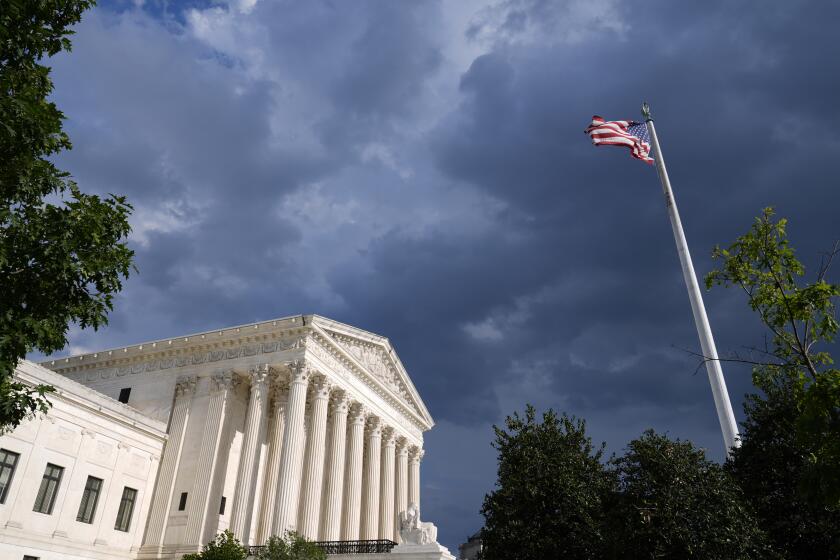Essential Politics: California’s budget is never truly finished

- Share via
This is the June 21, 2021, edition of the Essential Politics newsletter. Like what you’re reading? Sign up to get it in your inbox three times a week.
This marks the final week for Gov. Gavin Newsom and Democratic legislative leaders to strike a deal on a state budget before California’s new fiscal year begins on July 1.
Pressure? Sure. But the deadline has far less meaning now than it did for most of the state’s modern history.
Get our L.A. Times Politics newsletter
The latest news, analysis and insights from our politics team.
You may occasionally receive promotional content from the Los Angeles Times.
Even as elected officials and interest groups spar over the annual spending plan, the state budget is never truly finished. What was once a relatively static process of lawmakers weighing the state’s ways and means has evolved into a more dynamic approach that, at its best, acknowledges the complexity of California’s challenges and its economy.
A new California budget paradigm
Think of it as a new California budget paradigm, one that has widened the fiscal lens of lawmakers while granting them broad authority to adjust the spending plan weeks or months after it takes effect.
First, the field of vision. The governor and legislators now consider more than just the next 12 months when writing a budget — instead, considering a five-year period that takes into account the current fiscal year, the prior year, the budget year in question and then three more years beyond that.
The multiyear approach was put in place in 2012 and strengthened by voters in their approval of a larger, stronger state “rainy day” cash reserve fund in 2014.
“Most substantively, multiyear estimates offer the Legislature a vital measure of the state’s ongoing budget capacity,” Legislative Analyst Gabriel Petek wrote last month. “Without a reasonable approximation of the state’s current fiscal trajectory and bottom line over the next several years, policymakers are essentially flying blind.
Should economic conditions change, lawmakers can make adjustments. But that power has grown over the last decade and has led to what now feels like year-round budgeting.
The trend began in 2011, the year after California voters lowered the legislative threshold for passing a budget and enacted a rule to garnish legislators’ paychecks if no budget is approved by June 15. The paycheck requirement is pretty easy to meet, and last week the state Senate and Assembly approved a placeholder budget before reaching a deal with Newsom.
But the rule change has made the budget a tantalizing way to enact controversial policy ideas in a hurry.
Those efforts play out through the use of budget “trailer bills,” nicknamed for their link to the main spending plan and used to make any needed changes in the law. These bills are subject to very few legislative deadlines and take effect with the governor’s signature — a key point, as most bills approved by a simple majority don’t take effect until the following Jan. 1.
Legislators simply have to designate bills as budget-related earlier in the year. And in the placeholder budget passed last week, 140 bills — 70 in each house — are listed as potential “trailer bills” for use in the coming months.
Big bucks, big proposed spending plans
That brings us to the budget being negotiated by Newsom, Senate President Pro Tem Toni Atkins (D-San Diego) and Assembly Speaker Anthony Rendon (D-Lakewood).
Differences over California’s multiyear budget outlook, state Capitol sources say, are a key component of the negotiations that continued throughout the weekend.
Legislative Democrats believe that Newsom is underplaying growth in tax revenues. They’ve projected $7 billion more in revenue in the 2021-22 fiscal year compared with the governor’s plan — one reason why the Legislature’s budget seeks to provide more funding for a variety of government services.
And it doesn’t stop there. Legislators believe that by June 2025, Newsom’s tax revenue projections will have missed the mark by $20 billion.
The two sides also have to reconcile their differences on when and how to spend big bucks on homelessness services, expansion of broadband, public health funding and allowing more immigrants without legal status to access Medi-Cal, California’s healthcare program for low-income residents. Differences also remain over divvying up the state’s $27 billion in federal relief funds approved by Congress and President Biden.
Roiled by recall rules
One budget-related bill written by Democrats isn’t sitting so well with California election officials. The proposal seeks to speed up the timing on the Newsom recall election, leaving open the possibility of a statewide election as soon as late August or early September.
Notice that the description above doesn’t call it a special election. The bill would require counties to use rules that normally apply to regular elections in California — far different from those used last November, a statewide election that saw the highest turnout of eligible voters since 1952.
Enjoying this newsletter? Consider subscribing to the Los Angeles Times
Your support helps us deliver the news that matters most. Become a subscriber.
National lightning round
— After a year of protests over police brutality, some Republican-controlled states have ignored or blocked police-reform proposals, moving instead in the other direction by granting greater powers to officers.
— Voters are likely to pick the next mayor of New York City this week in a Democratic primary that will also be a major test of ranked-choice voting.
— Videos released under court order provide a chilling new look at the chaos at the U.S. Capitol on Jan. 6, including footage that shows a man charging at a police officer with a flagpole and tackling him to the ground.
— Most Americans don’t actually know what Juneteenth is, and what it is not.
— Ronald J. Ostrow, who helped vault The Times into the first rank of Washington journalism during the Watergate scandal and won respect from leading Democrats and Republicans alike, died at his home in Chevy Chase, Md. He was 89.
Today’s essential California politics
— As he ends the state’s COVID-19 restrictions, Newsom is also doing his best to shut the book on the recall months before the election.
— While the rules of the recall have stayed the same, much about the state has changed since the 2003 vote to oust then-Gov. Gray Davis.
— California has launched a COVID-19 vaccine verification system that provides digital replicas of the traditional wallet-size paper cards.
— Businesses see both opportunities and risk in the new California’s digital vaccine records.
— California’s borrowing to pay unemployment benefits will balloon to $26.7 billion by the end of next year as state funds prove inadequate to cover the costs of unprecedented joblessness caused by the COVID-19 pandemic, a new report warns.
— A man has been arrested on suspicion of assaulting Newsom during his visit to downtown Oakland last week.
— With the pandemic waning, Californians who receive unemployment benefits will have to show next month that they are looking for work.
Stay in touch
Keep up with breaking news on our Politics page. And are you following us on Twitter at @latimespolitics?
Did someone forward you this? Sign up here to get Essential Politics in your inbox.
Until next time, send your comments, suggestions and news tips to politics@latimes.com.
Get the L.A. Times Politics newsletter
Deeply reported insights into legislation, politics and policy from Sacramento, Washington and beyond. In your inbox twice per week.
You may occasionally receive promotional content from the Los Angeles Times.




